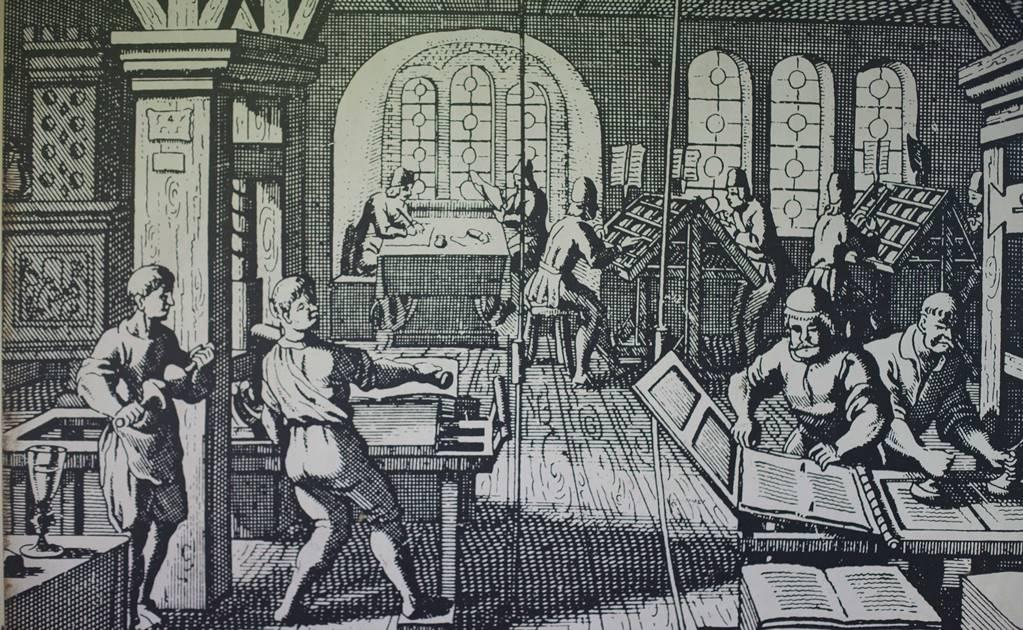Woodcut of early printing workshop (Public Domain)
Around 1448, the German goldsmith Johannes Gutenberg (c. 1400 – 1468) gets a brilliant idea: He takes a printing press and breaks reconstructs its printing surface into changable components. He sets up a print office in Mainz and prints his first Bible around 1454.
Gutenberg’s invention quickly goes viral. Before long, printing presses appear in Germany, Italy, France and the Low Countries. Then they crop up in Bohemia, Poland, England, Spain, Portugal, and Scandaniva. The number of operating printing presses in Europe rises from around 15 in 1471 to at least 87 in 1480.
The Gutenberg Revolution has a profound influence on cultural and intellectual movements like the Renaissance, the Reformation and the Scientific Revolution.
